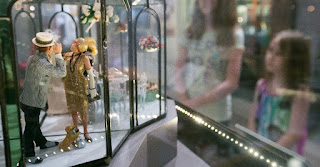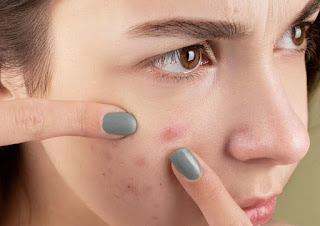As the news cycle regularly demonstrates
As the news cycle regularly demonstrates, the simple, quintessentially modern act of taking a photograph has now become a predominant way of subverting entrenched power. And female artists, often on the fringes of cultural society, have been using their cameras to do just that for well over 100 years. This is one of the provocative declarations made by Our Selves: Photographs by Women Artists from Helen Kornblum, the Museum of Modern Art’s empowering new exhibit of work by female photographers from over 100 years and all around the globe.
“For me it was interesting to constantly ask the question what is a feminist picture, because I got so many answers,” exhibit curator Roxana Marcoci told the Guardian. In fact, Our Selves provides 90 answers to this question, ranging from Frances Benjamin Johnston’s 1899 photograph of young students in a penmanship class to Black photographer Carrie Mae Weem’s 1990s “kitchen table” series. Feminist pictures also look like queer photographer Catherine Opie’s work Angela Scheirl, which depicts the transgender artist Hans Scheirl years before he transitioned to male, and Native American Cara Romero’s Wakeah, a 2018 portrayal of her friend Wakeah Jhane in full tribal dress.
Yet even as Our Selves can proudly declare that feminism supports a wide-ranging, inclusive idea of womanhood, Marcoci is mindful that this has not always been the case. “As women have fought for sovereignty, they have not always included all women,” she said. Indeed, this is one of the central questions that this show seeks to grapple with. “When I was conceiving of the exhibit, I was thinking about, Ain’t I a Woman?, bell hooks’ blistering critique of first and second wave feminism for sidelining women of color. So this was all underlying the exhibition as it was coming together.”
Our Selves emerged from a deep-rooted collaboration between Marcoci and psychotherapist Helen Kornblum. For over 40 years, Kornblum meticulously built a collection of photographs made by female artists, and a gift to the MoMA of many of these photographs comprises the core of Our Selves. This gift was the fruit of a longtime professional relationship between Marcoci and Kornblum: since 2014, they have served together on the MoMA’s Committee on Photography, developing the museum’s representation of female artists and pushing the museum to rethink dominant narratives handed down by the patriarchal power structure. For Marcoci, this connection has been transformative. “When [Kornblum] joined the Committee on Photography, we instantly bonded on our work on women artists and women’s rights. When I saw her photography collection for myself, I loved the vision that she had brought to it. It connected with my own interests and the MoMA’s mission, to show arts that reflect a diversity of race and gender.”
Our Selves stretches back to the late 19th century, and it pays due respect to the modernist movement that underlies so many of the latter day artists it shows. The art here includes modernist greats like Claude Cahun, Tina Modetti, and Lotte Jacobi, and it name-checks the likes of Leonora Carrington and Frida Kahlo. To these standard-bearers, Our Selves also adds lesser-known artists like Gertrud Arndt and Alma Levenson a collaborator of Ansel Adams, Imogen Cunningham, and Edward Weston. While these images are powerful in their own right, they also act as a foundation, helping to situate and ground the more contemporary works on display throughout the show.
The theme of self-presentation is strongly prevalent throughout Our Selves, with so many of the pieces on display here having been developed from intimate relationships between photographer and subject. For instance, while looking at Romero’s Wakeah – an image of a Native American woman covered head-to-toe in layers and layers of clothing – the subject offers a sense of vulnerability and display in spite of her voluminous dress. Romero’s subject, a good friend, trusts the photographer to not do as so many other photographers have done before when confronted with Native American dress and culture. Although her gaze is proud and strong, it lacks the wariness that comes with powerlessness and appropriation, instead subtly beckoning the viewer closer.
The gaze in Wakeah meets up in interesting ways with the gazes in the photographs by the American war photographer Susan Meiselas, demonstrating the exhibition’s fascinating coherence, the photographs continually playing off one another. In Meiselas’s aptly named Tentful of Marks, the camera is poised behind the two lithe, heeled legs of a carnival stripper, while one of the titular marks gazes up in awe at her, behind him so many similarly fixated, zombified male faces. Those faces take on added meaning when seen in conjunction with Meiselas’s other contributions to the show: Traditional Mask Used in the Popular Insurrection, Monimbo, Nicaragua. That image shows an individual, presumably male, whose entire face and gaze is effaced by a mask of a mustachioed man that stares straight into the camera, the subject’s humanity only defined by one hand resting furtively on a barbed wire fence. While Wakeah shows what is possible when power relationships are momentarily left aside, Meiselas’s photographs are about deconstructions of power relationships in full bloom. Together, all three raise questions about gender, bodies, and who has the right to gaze at whom.
Carrie Mae Weems’s photograph Woman and Daughter with Makeup captures another moment of profound gazing, when these power relationships are seemingly at bay, yet are also quietly operative. The picture simply depicts a Black woman and her daughter simultaneously applying lipstick; the two exist at once together and separately, as they eerily synchronize their movements yet do so while focusing intensely on their own mirror reflection, seemingly each in their own world. Marcoci told me that this photo stood out to her for the way that Weems “places Black women at the forefront of the consequences of power. It’s such a moment of enacting beauty, synchronized performance, and yet nothing is fetishized in this picture. It’s an image of care, Black beauty, Black interiority … there’s so much grace in how it’s expressed.”
Our Selves is worthy of applause for the respect it pays to women of various intersectional identities – not only does it celebrate artists like Weems and Romero, it also offers Catherine Opie’s transformational photographs of queer life, and the show acknowledges its debts to postcolonial and queer theorists. However, all of this does make it disappointing that the show contains no works by or of transgender women. Particularly at a time when many identifying as “feminists” are attempting to deprive transgender women of their safety, dignity, and basic rights – recalling the way that prior waves of feminism sought to exclude non-white, non-heterosexual women – it would seem logical that an exhibition that prides itself on its inclusiveness and its dedication to all women’s rights would want to make its voice clear on this subject. It is the one false note in an otherwise glorious celebration of women and photography.
Much as Our Selves does to push forward important conversations and ideas for the future of feminism, Marcoci is mindful that it is a part of a much larger struggle. “It’s important to keep in mind that the work is never done,” she said. “I know that I will continue drawing attention to women artists and issues for the rest of my professional life. It’s work of unlearning the histories that have been taught to us in school and envisioning different narratives, like learning a new language basically.”
Read Also :
https://www.hihonor.com/tr/club/topicdetail/topicid-74715/
https://www.hihonor.com/tr/club/topicdetail/topicid-74744/
https://www.hihonor.com/tr/club/topicdetail/topicid-74758/
https://www.hihonor.com/tr/club/topicdetail/topicid-74768/
https://www.hihonor.com/tr/club/topicdetail/topicid-74791/


Comments
Post a Comment